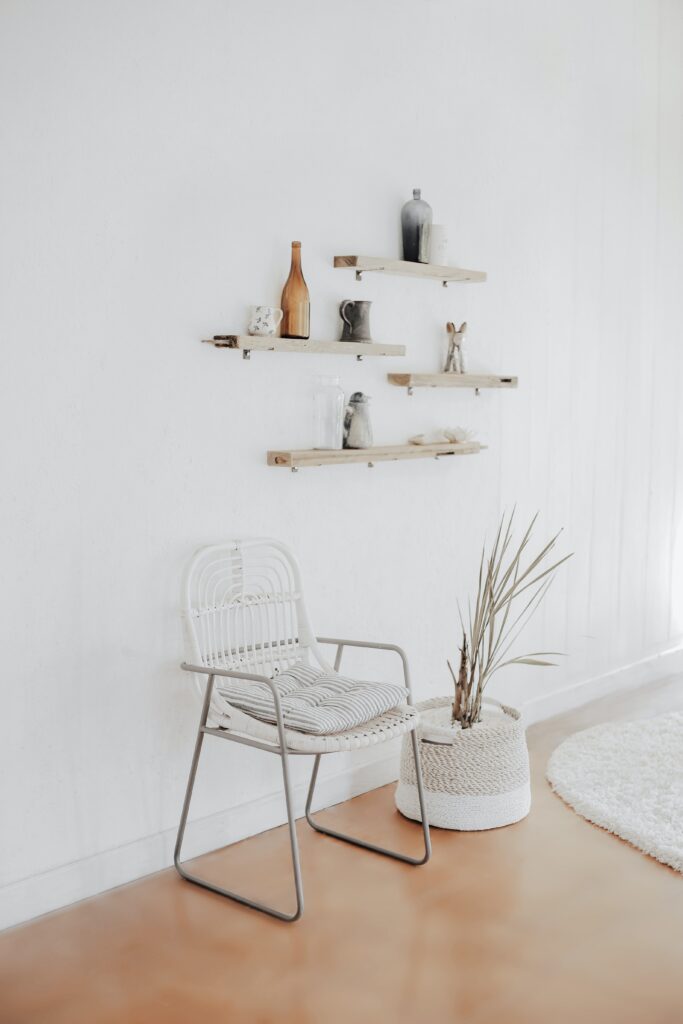Smart bedroom devices have become increasingly popular in recent years, providing convenience and comfort with just a tap or a voice command. However, like any technology, they can sometimes encounter hiccups and glitches that leave us scratching our heads in frustration. But fear not, because in this article, you will find a treasure trove of troubleshooting tips to help you get your smart bedroom devices back on track. From unresponsive lights to temperamental thermostats, we’ve got you covered with simple solutions that will have your bedroom buzzing with technology once again. So sit back, relax, and let’s embark on a journey to troubleshoot and conquer those pesky smart device issues together!

1. Connectivity Issues
1.1 Wi-Fi Connection Problems
One of the most common issues faced by smart bedroom device users is Wi-Fi connection problems. If you are experiencing difficulty in connecting your device to the Wi-Fi network, there are a few troubleshooting tips you can try. First, make sure that your Wi-Fi network is working properly and that other devices in your home are able to connect to it. If your Wi-Fi network is functioning fine, try restarting both your device and your Wi-Fi router. This simple step can often resolve connectivity issues. If the problem persists, you may need to reset your Wi-Fi settings on the device and reconnect it to the network.
1.2 Bluetooth Connection Problems
Bluetooth connection problems can also occur with smart bedroom devices that rely on Bluetooth technology for connectivity. If you are having trouble pairing your device with your smartphone or other Bluetooth-enabled device, there are a few steps you can take to troubleshoot the issue. First, ensure that the Bluetooth feature is enabled on both devices. Next, check if the devices are within close proximity to each other, as Bluetooth connectivity can be limited to a certain range. If the connection problem persists, try turning off the Bluetooth feature on both devices and then turning it back on. Additionally, clearing the Bluetooth cache on your smartphone or device can often resolve pairing issues.
1.3 Device Pairing Issues
Device pairing issues can arise when trying to connect your smart bedroom device with a compatible app or hub. If you are having trouble pairing your device, start by ensuring that the device and the app or hub are compatible with each other. Check the manufacturer’s website or user manual for compatibility information. If the device and app are compatible, make sure that both are running the latest versions of their respective software. Often, updates can improve compatibility and resolve pairing issues. If the problem persists, try resetting your device and following the pairing instructions provided by the manufacturer.
2. Device Initialization Issues
2.1 Setting up the Device
When setting up a new smart bedroom device, you may encounter initialization issues. These can include difficulties in getting the device to turn on or respond to commands. If you are experiencing initialization problems, start by checking that the device is properly connected to a power source. Ensure that the power cable is securely plugged into both the device and the outlet. If the device still does not power on, try resetting it by holding down the reset button (if applicable) for a few seconds. If the problem persists, consult the device’s user manual for specific troubleshooting steps.
2.2 Connecting to the App
Connecting your smart bedroom device to its corresponding app is essential for accessing all of its features and controls. However, connectivity issues between the device and the app can arise. If you are having trouble connecting your device to the app, start by checking that both the device and your smartphone or tablet are connected to the same Wi-Fi network. Additionally, ensure that the app is up to date by checking for updates in the app store. If the connection problem persists, try closing the app and restarting your device. If all else fails, uninstalling and reinstalling the app can often resolve connectivity issues.
2.3 Device Firmware Updates
Firmware updates are important for keeping your smart bedroom device running smoothly and securely. If you encounter issues with your device, such as unresponsiveness or connectivity problems, it is worth checking if a firmware update is available. Most devices allow you to check for updates through their respective apps or settings menus. If an update is available, make sure to read and follow the instructions provided by the manufacturer. Firmware updates often provide bug fixes, improved functionality, and enhanced security measures, so it is recommended to regularly check for updates and install them as needed.

3. Power and Charging Problems
3.1 Battery Drain Issues
Battery drain issues can be frustrating, especially if your smart bedroom device relies on batteries for power. If you find that your device’s batteries are draining quickly, there are a few things you can do to address the issue. First, check the device’s power settings and make sure that unnecessary features or background processes are not consuming excessive power. Dimming the device’s screen brightness, reducing its screen timeout duration, and disabling unused connectivity options can help conserve battery life. If the issue persists, try using high-quality batteries or rechargeable batteries specifically recommended by the device’s manufacturer.
3.2 Faulty Power Cables
Faulty power cables can prevent your smart bedroom device from receiving adequate power or charging properly. If you suspect that the power cable is the source of the problem, try using a different cable to see if the issue resolves. Ensure that the replacement cable is compatible with your device and meets the manufacturer’s specifications. If the device charges correctly with the new cable, it indicates that the original cable was indeed faulty. In such cases, it is recommended to replace the faulty cable with a new one to prevent future power and charging problems.
3.3 Power Outages and Surge Protection
Power outages and electrical surges can not only disrupt the functioning of your smart bedroom devices but also potentially damage them. To protect your devices from power-related issues, consider using surge protectors or uninterruptible power supply (UPS) units. Surge protectors can safeguard your devices from sudden voltage spikes, while UPS units provide temporary power during outages, allowing you to safely shutdown your devices. Additionally, it is advisable to unplug your devices during severe storms or if you anticipate prolonged power outages. Taking these precautions can help mitigate power-related problems and ensure the longevity of your smart bedroom devices.
4. Device Malfunctioning
4.1 Device Freezing or Crashing
Device freezing or crashing can be frustrating, especially when it interrupts your desired functionality. If your smart bedroom device becomes unresponsive or crashes frequently, there are a few troubleshooting steps you can take. First, try restarting the device by turning it off and then on again. This simple step can often resolve minor software glitches causing freezing or crashing. If the problem persists, check if the device’s firmware is up to date and install any available updates. If the issue continues, you may need to perform a factory reset, but make sure to back up any important data as a factory reset will erase all settings and data on the device.
4.2 Unresponsive Touchscreen or Controls
An unresponsive touchscreen or controls can significantly impact your ability to interact with your smart bedroom device. If you are facing issues with the device’s touchscreen or controls, start by checking if there is any debris or dirt on the screen or buttons. Clean the surface gently using a soft, lint-free cloth. Avoid using abrasive materials or harsh chemicals that may damage the device. If cleaning the surface does not resolve the problem, try powering off the device and removing its battery (if applicable) for a few minutes. Insert the battery again and power on the device to see if the touchscreen or controls become responsive.
4.3 Device Not Syncing or Updating
If your smart bedroom device is not syncing or updating as expected, it may be due to a few different factors. First, ensure that the device and app or hub are connected to the same Wi-Fi network and that they are within close proximity to each other. Additionally, check if both the device and the app or hub are running the latest versions of their respective software. Outdated software can hinder synchronization and prevent updates from being installed. If the issue persists, try resetting the device to its factory settings and going through the setup process again. This can often resolve syncing and updating problems.

5. Voice Control Issues
5.1 Inaccurate Voice Recognition
Voice control is a prominent feature in many smart bedroom devices, but it can sometimes struggle with accurate voice recognition. If your device is not accurately understanding and responding to your voice commands, there are a few steps you can take to troubleshoot the issue. First, make sure that you are speaking clearly and pronouncing your words correctly when giving voice commands. If the problem persists, check if there is any background noise or ambient sound that may be interfering with the device’s microphone. Try reducing the noise level in the room or moving closer to the device when giving voice commands.
5.2 Smart Assistant Malfunction
Smart bedroom devices often rely on integrated smart assistants for voice control and other functionalities. If the smart assistant on your device is malfunctioning or unresponsive, there are a few things you can try to resolve the issue. First, restart the device and see if the smart assistant starts functioning normally. If not, check if there are any software updates available for the device and install them. Outdated software can sometimes impact the performance of the smart assistant. If the problem persists, contact the device manufacturer’s support or customer service for further assistance and troubleshooting.
5.3 Voice Command Troubles
If you are experiencing difficulties with voice commands being properly executed by your smart bedroom device, there are a few troubleshooting tips you can try. First, check if the specific voice command you are using is supported by the device’s smart assistant. Consult the user manual or the manufacturer’s website for a list of available voice commands. Additionally, ensure that you are speaking the command clearly and concisely, without any unnecessary words or repetitions. If the problem persists, try retraining the voice recognition feature by going through the setup process again. This can sometimes improve the device’s ability to understand and execute voice commands accurately.
6. Interference and Signal Problems
6.1 Signal Interference from Other Devices
Signal interference from other devices can disrupt the functioning of your smart bedroom devices, especially if they rely on wireless connectivity. If you are experiencing intermittent or weak signals, it may be due to interference from other electronic devices in close proximity. To mitigate this issue, try relocating the affected devices away from potential sources of interference, such as cordless phones, baby monitors, or microwave ovens. Additionally, consider changing the channel or frequency of your Wi-Fi network, as this can sometimes alleviate interference issues. Optimal placement and proper channel selection can significantly improve signal quality and reliability.
6.2 Insufficient Signal Strength
Insufficient signal strength is another common issue that can hinder the performance of smart bedroom devices. If you are experiencing poor signal strength, there are a few steps you can take to improve it. First, ensure that your device is within the range of your Wi-Fi router or access point. If the device is too far away, it may struggle to maintain a consistent connection. If possible, move the device closer to the router or consider installing a Wi-Fi range extender to amplify the signal. Additionally, minimize obstacles and interference between the device and the router, such as walls or large objects that can obstruct the signal.
6.3 Device Distance from Router
The distance between your smart bedroom device and the Wi-Fi router can significantly impact the quality of the wireless signal. If you are experiencing connectivity issues, particularly if the device is located far away from the router, it is worth considering the placement of the router. Centralize the router in your home to maximize coverage and reduce the distance between devices and the router. Additionally, elevate the router to a higher position to minimize obstructions, such as walls or furniture, that can weaken the signal. Experiment with router placement to find the optimal position that ensures a reliable and strong connection throughout your smart bedroom.

7. App and Software Problems
7.1 App Crashing or Not Opening
If the app associated with your smart bedroom device crashes frequently or refuses to open, there are a few troubleshooting steps you can take. First, check if the app is up to date by visiting the app store and installing any available updates. Outdated software can often cause instability and crashes. If the issue persists, try restarting your smartphone or tablet and then launching the app again. This simple step can sometimes resolve minor software glitches causing the app to crash or not open. If all else fails, uninstall the app and reinstall it to ensure a fresh installation of the software.
7.2 Compatibility Issues with OS
Compatibility issues between the app and the operating system (OS) running on your smartphone or tablet can sometimes lead to app malfunctioning or poor performance. If you are experiencing compatibility problems, check if there are any updates available for your device’s OS. Software updates can often enhance compatibility and resolve issues. Additionally, ensure that both the app and your OS are running the latest versions. If the problem persists, contact the app developer’s support or customer service for further assistance. They may be able to provide specific troubleshooting steps or offer insight on any known compatibility issues.
7.3 Software Updates and Bug Fixes
Regular software updates are crucial for maintaining the performance and security of your smart bedroom devices. If you encounter software-related issues, such as glitches, crashes, or missing features, it is worth checking if there are any updates available for the device’s software. Most devices allow you to check for updates within their respective apps or settings menus. If an update is available, make sure to read the release notes and follow the instructions provided by the manufacturer. Software updates often include bug fixes, performance improvements, and new features, making them essential for a smooth and enjoyable user experience.
8. Privacy and Security Concerns
8.1 Unauthorized Access to Devices
Privacy and security concerns are important to address when using smart bedroom devices. Unauthorized access to your devices can compromise your private information and even pose physical risks. To enhance security, make sure to change the default passwords of your devices to unique and strong passwords. Avoid using easily guessable combinations, such as birthdates or simple words. Additionally, consider enabling two-factor authentication if supported by the devices and apps you are using. Regularly update the firmware and software of your devices, as updates often include security patches and bug fixes. Taking these precautions can significantly mitigate the risk of unauthorized access to your smart bedroom devices.
8.2 Weak Passwords and Encryption
Weak passwords can make your smart bedroom devices vulnerable to hacking and unauthorized access. Ensure that you use strong, unique passwords for each device and avoid reusing passwords across different accounts. Use a combination of letters, numbers, and special characters to create a strong password that is difficult for others to guess. Additionally, check if your devices support encryption options, such as WPA3 for Wi-Fi networks. Enabling encryption can provide an added layer of security for your devices and safeguard your personal information from potential threats.
8.3 Home Network Vulnerabilities
Your home network serves as the backbone for your smart bedroom devices, and vulnerabilities in the network can expose your devices to security risks. To secure your home network, start by changing the default password and username of your Wi-Fi router. Additionally, ensure that your router’s firmware is up to date by checking for updates on the manufacturer’s website. Limit the devices connected to your home network and disable any unnecessary or unused services or features. Regularly monitor your network for unusual activity and consider using network security tools, such as firewalls and antivirus software, to further protect your devices and personal data.

9. Troubleshooting Smart Lighting
9.1 Dimmer or Flickering Lights
If your smart bedroom lighting is experiencing issues such as dimming or flickering, there are several potential causes and troubleshooting steps to consider. First, check if the light bulbs you are using are compatible with your smart lighting system. Different systems have specific requirements for bulb compatibility, so make sure to check the manufacturer’s recommendations. Ensure that the bulbs are securely screwed into their sockets and not loose or defective. If using dimmable bulbs, make sure that the dimmer settings on both the bulbs and the smart lighting system are properly adjusted. If the issue persists, contact the manufacturer’s support or consult the user manual for further troubleshooting guidance.
9.2 Unresponsive Light Controls
If the controls for your smart bedroom lighting are unresponsive or not functioning as expected, there are a few troubleshooting steps you can take. First, check if the light switch controlling the lights is in the “on” position and that the power supply is functioning properly. Ensure that the smart lighting system is connected to power and that all the connections are secure. If using a smart home hub or app for control, ensure that the hub or app is connected to the same Wi-Fi network as the smart lighting system. If the issue persists, try resetting the smart lighting system according to the manufacturer’s instructions.
9.3 Bulb or Fixture Compatibility Issues
Compatibility issues between smart bulbs or fixtures and your smart lighting system can result in various problems. If you experience compatibility issues, consider checking if the bulbs and fixtures are specifically recommended or certified by the smart lighting system manufacturer. Different systems may have specific compatibility requirements, and using uncertified bulbs or fixtures can lead to performance issues. Additionally, ensure that the bulbs and fixtures are properly installed and connected to the smart lighting system. If the problems persist, consult the manufacturer’s support or customer service for assistance in troubleshooting compatibility issues.
10. Temperature Control Problems
10.1 Incorrect Temperature Readings
If your smart bedroom temperature control system is displaying incorrect readings, there are a few things you can do to troubleshoot the issue. First, check if the temperature sensor is located properly and not affected by external factors. Ensure that it is not exposed to direct sunlight, drafts, or other heat sources that can impact its readings. If the system allows calibration, follow the manufacturer’s instructions to calibrate the sensor. Additionally, ensure that the system’s firmware and software are up to date to avoid any software-related issues. If the problem persists, contact the manufacturer’s support for further guidance and assistance.
10.2 Inconsistent Thermostat Programming
If your smart bedroom thermostat is not following its programmed schedule or is displaying inconsistent temperature settings, there are a few troubleshooting steps you can take. First, check if the thermostat’s programming settings are configured correctly. Ensure that the correct time and dates are set, and verify that the schedule aligns with your desired temperature settings. If the problem persists, check if there are any firmware or software updates available for the thermostat and install them if necessary. Additionally, make sure that the thermostat is installed in a location that accurately reflects the ambient temperature of the room, avoiding sources of heat or cold air that can impact its readings.
10.3 HVAC System Integration
Integrating your smart bedroom temperature control system with your HVAC (Heating, Ventilation, and Air Conditioning) system can sometimes lead to compatibility or performance issues. If you are experiencing problems with system integration, start by checking if the smart thermostat or temperature control system is compatible with your HVAC system. Verify that the wiring and connections are properly installed according to the manufacturer’s instructions. If the integration issues persist, consult the thermostat manufacturer’s support or contact a professional HVAC technician for further assistance. They can provide specific troubleshooting steps or suggest alternative solutions for achieving seamless integration between the systems.
By following these troubleshooting tips, you can address common issues that may arise with your smart bedroom devices. Remember to consult the manufacturer’s documentation and support resources for specific guidance and additional troubleshooting steps. With patience and persistence, you can overcome these challenges and enjoy the convenience and functionality that smart bedroom devices bring to your living space. Happy troubleshooting!
